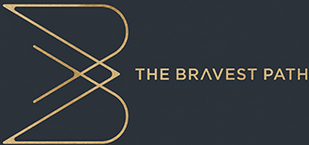The Art of Saying No: Practicing the Repeated No
Maybe you have clarified what you want. Maybe you’ve become really clear on your “absolute-no” list. Maybe you’ve had the courage to deliver a difficult no.
And yet, there might be times where you still encounter resistance from others.
Perhaps you’ve enacted the pause and let someone know you need some time to think, but then find you are being pushed to make a decision in the moment. I call this the repeated no, and it can be exhausting.
When someone pushes back against a boundary, we can lose our footing. It’s one thing to have the courage to say no, but how do we practice remaining steady when delivering a repeated no?
In the past, when having to say no over and over, I can become worn down, change my stance to please others, and end up questioning myself: Is it okay to be saying no? Am I being unreasonable?
The repeated no might occur when we have been too soft with our boundaries initially. The right body language can help convey our limits in such instances, and it’s important to find a balance between warmth and strength. We might be tempted to become short and sharp in our responses, but maintaining eye contact and smiling can improve how our message is received.
While body language plays an important role in communication, knowing our ‘why’ or motivation is also useful. Sometimes it's difficult to articulate why something is a no. Push-back on a no or pressure to make a decision can often catch us off guard. We can easily become dysregulated as our prefrontal cortex “goes offline” and we find ourselves fumbling.
This is where enacting the pause is helpful as it offers us time to reflect and feel empowered in our reasoning. Other times, it’s important to acknowledge it might be that our “why” isn’t sound, and so we can get curious about that.
For example, we might ask ourselves whether we are mistaking firmness for stubbornness. To tell the difference, it often comes back to values. Revisiting our “absolute-no” list can help guide us, as can checking in with a trusted friend or colleague.
When we have clarity about our why, it is harder for someone else to push up against our no, and it's less likely we will have to say it repeatedly.
A brave conversation might be the next step - that is, talking about the facts, the story you might make up about it, how you feel, what you need, and then asking the other person what they think about the situation. This conversation provides us with different viewpoints and can allow us to refine our boundaries and make decisions.
It’s important to remain open and curious, warm and strong, and stand firmly in our values. Sometimes a repeated no is just as much about reminding ourselves of our worth and our options, as it is demonstrating those values to others.
Bethan Davies, Managing Director of The Bravest Path, shares her personal insights on the power of saying no and offers strategies to help you embrace your own strength. Find out more about The Bravest Path's leadership development programmes here:

